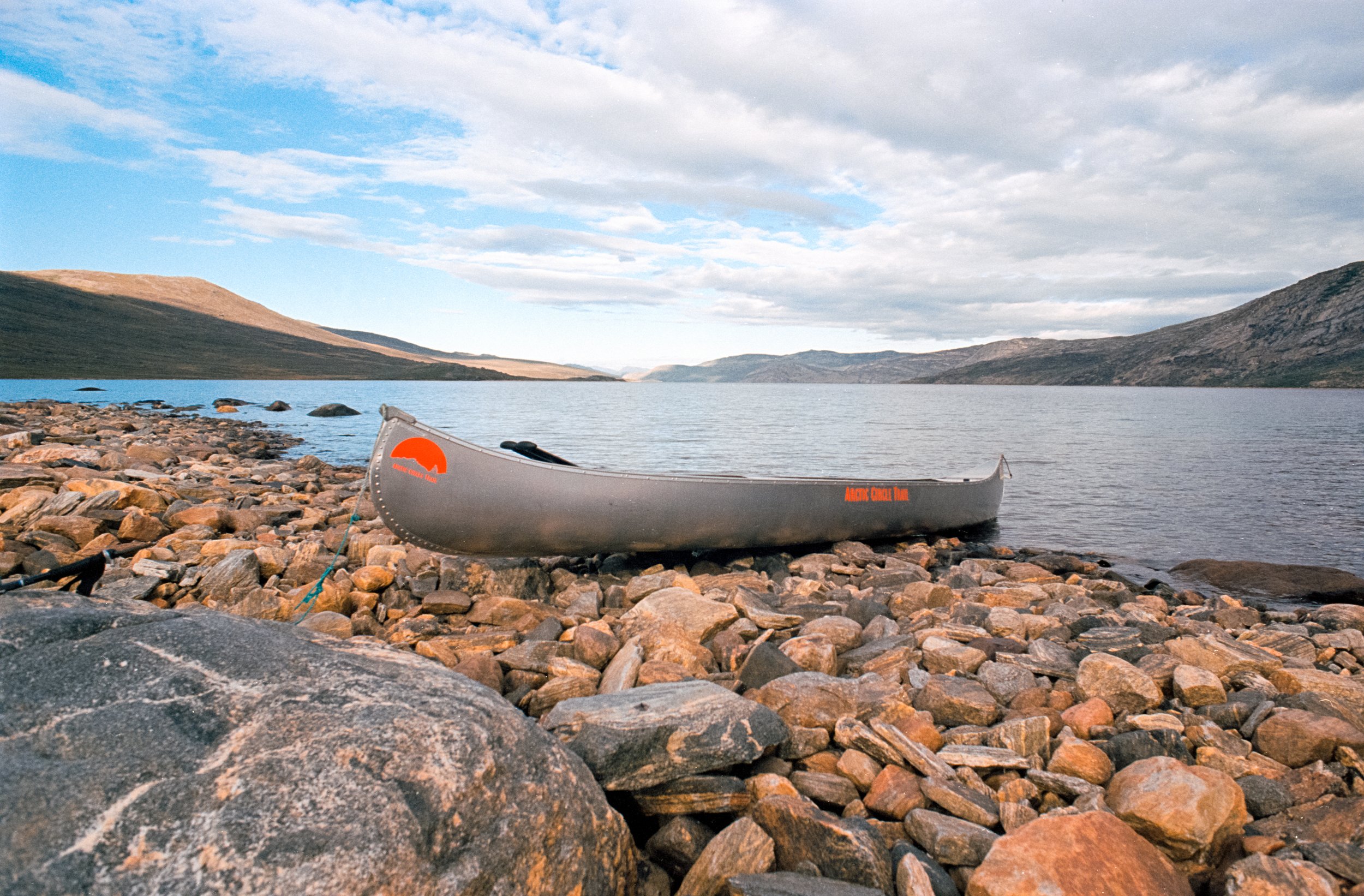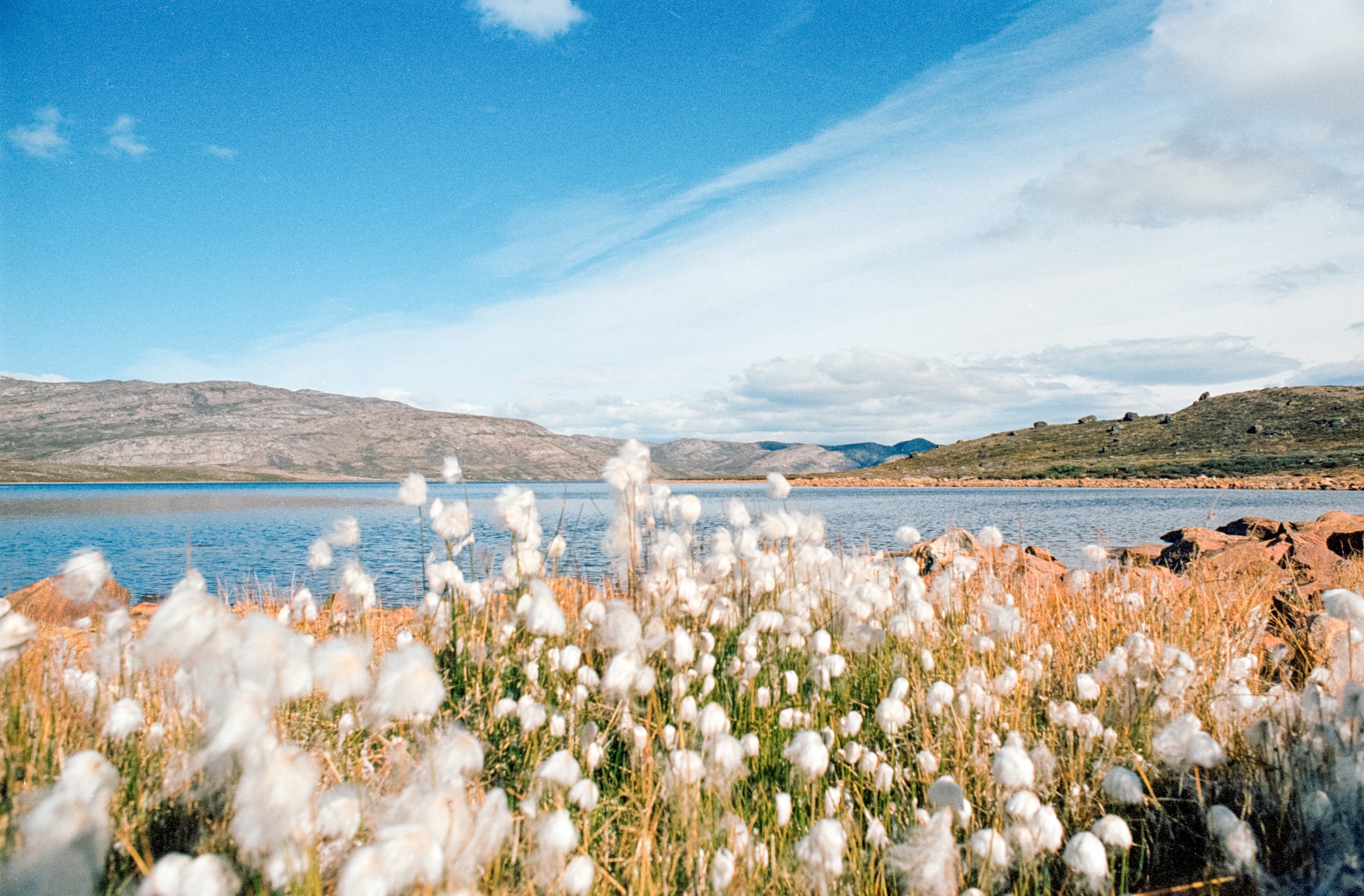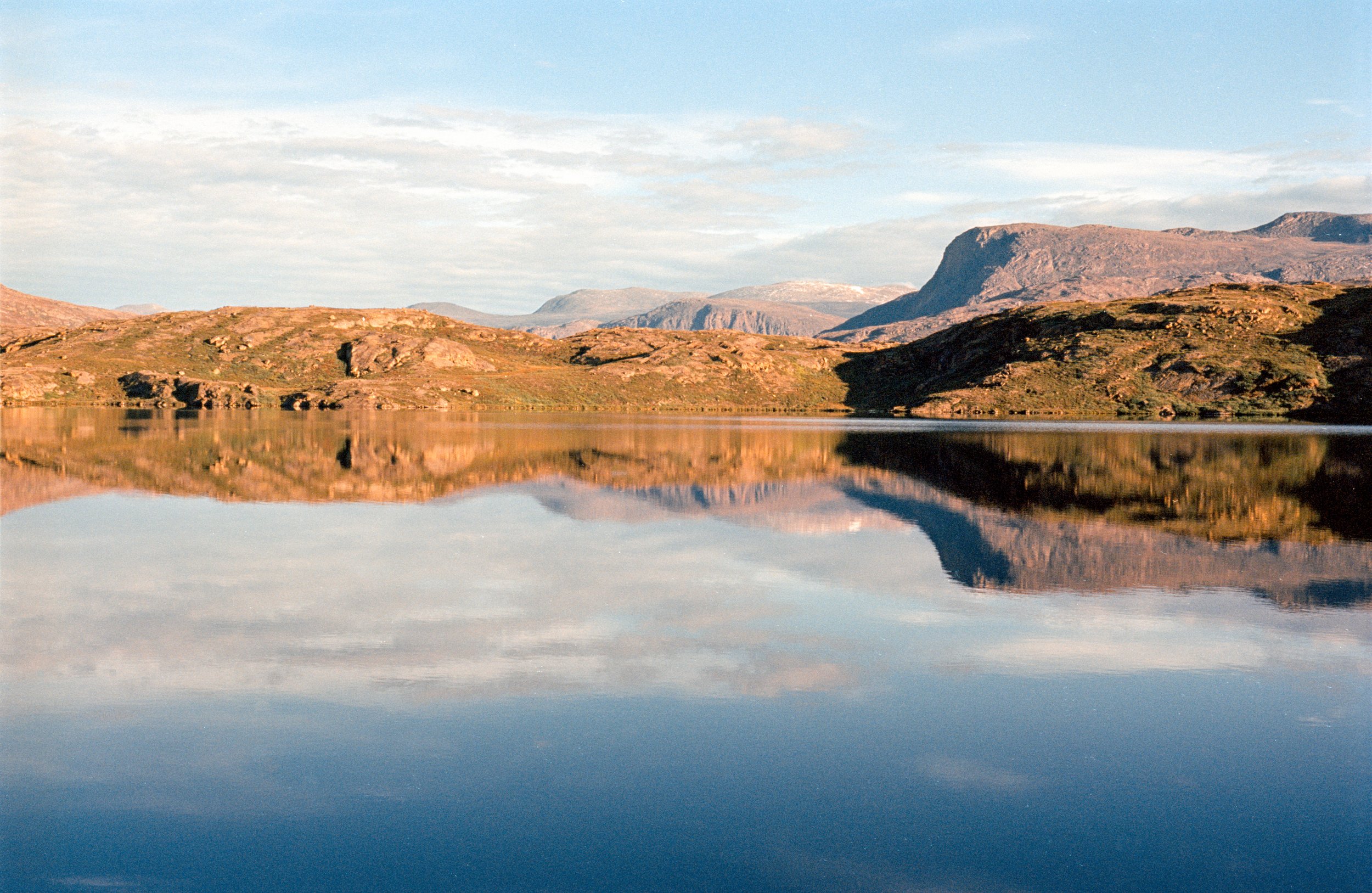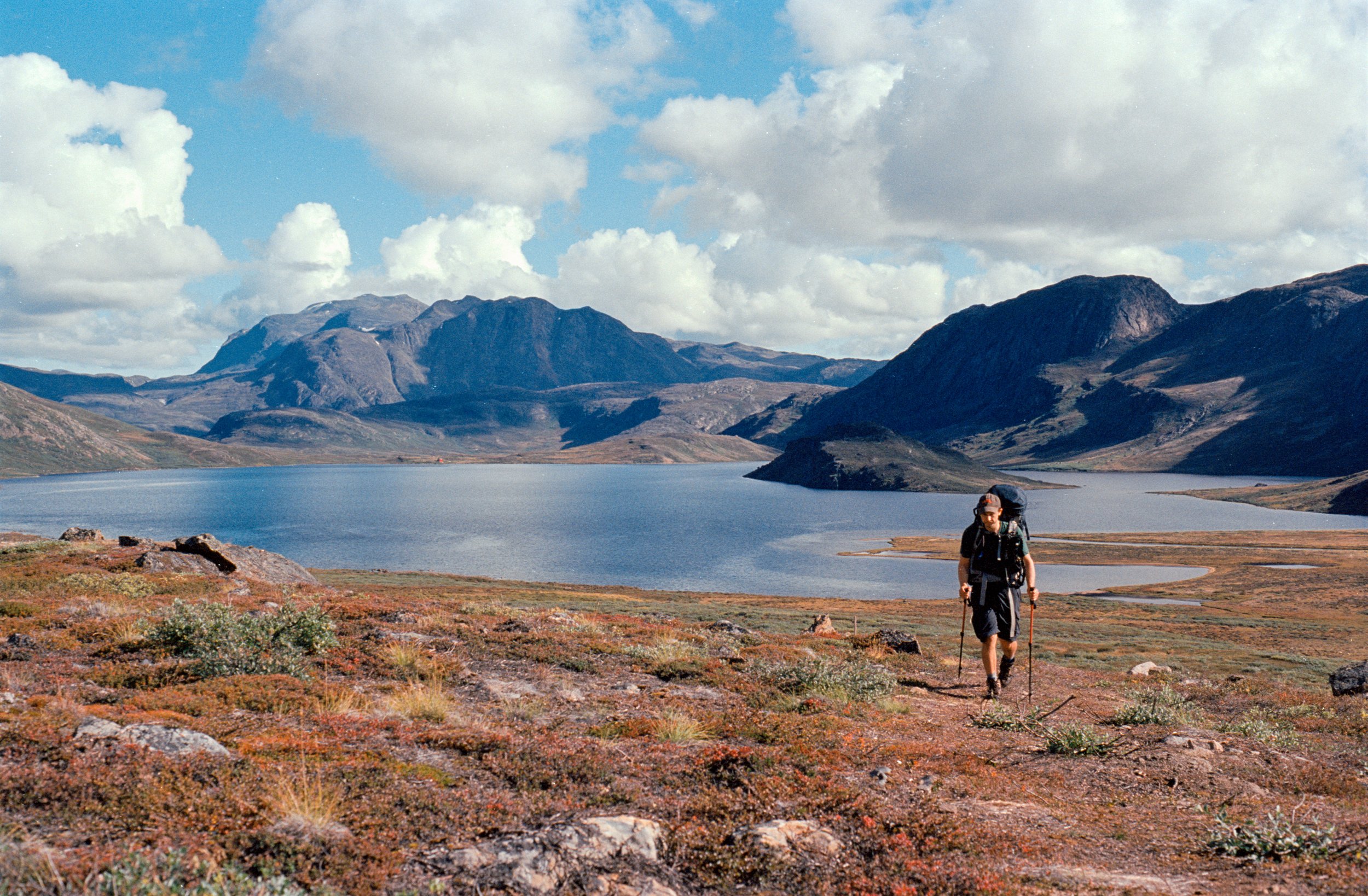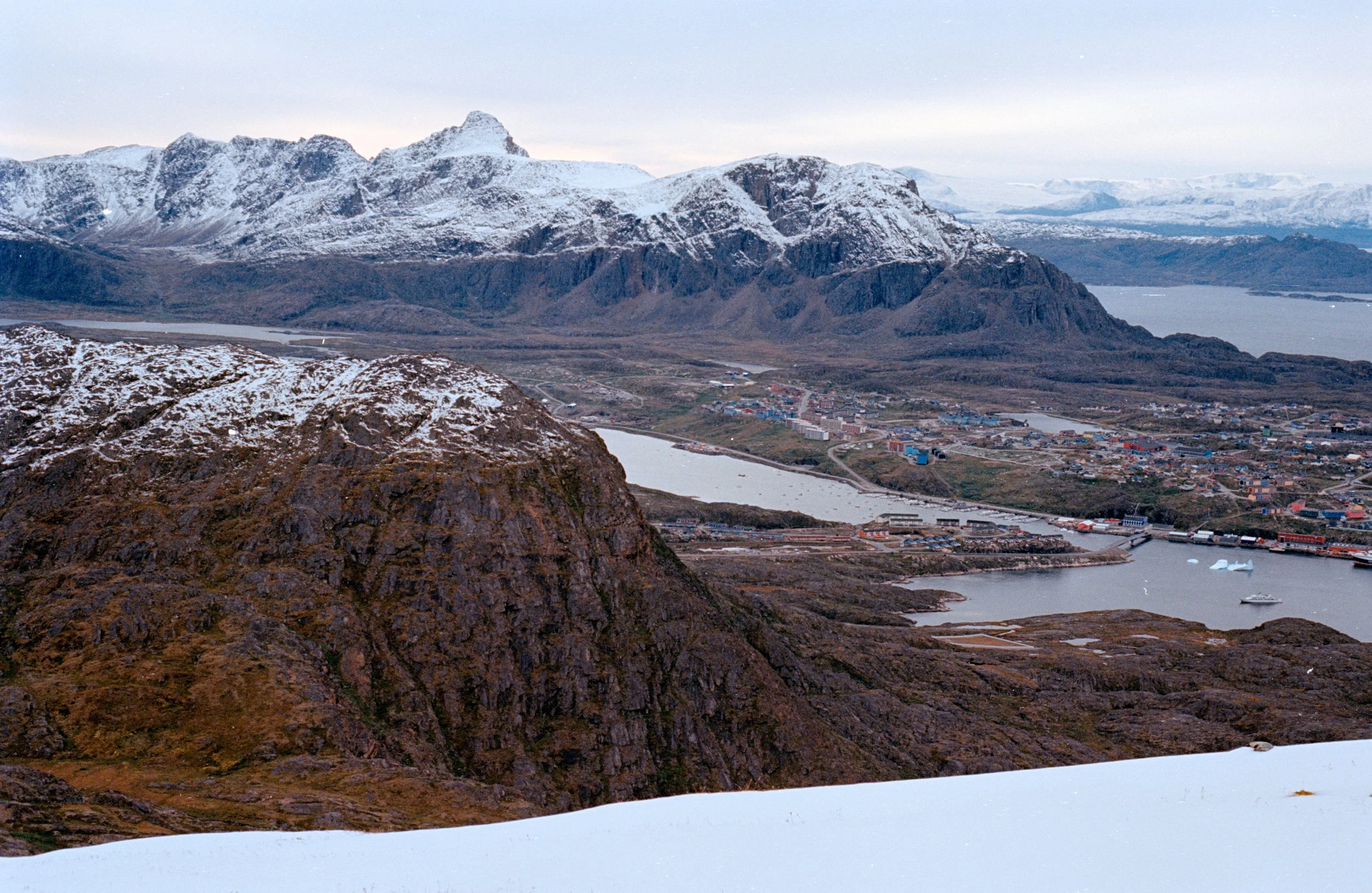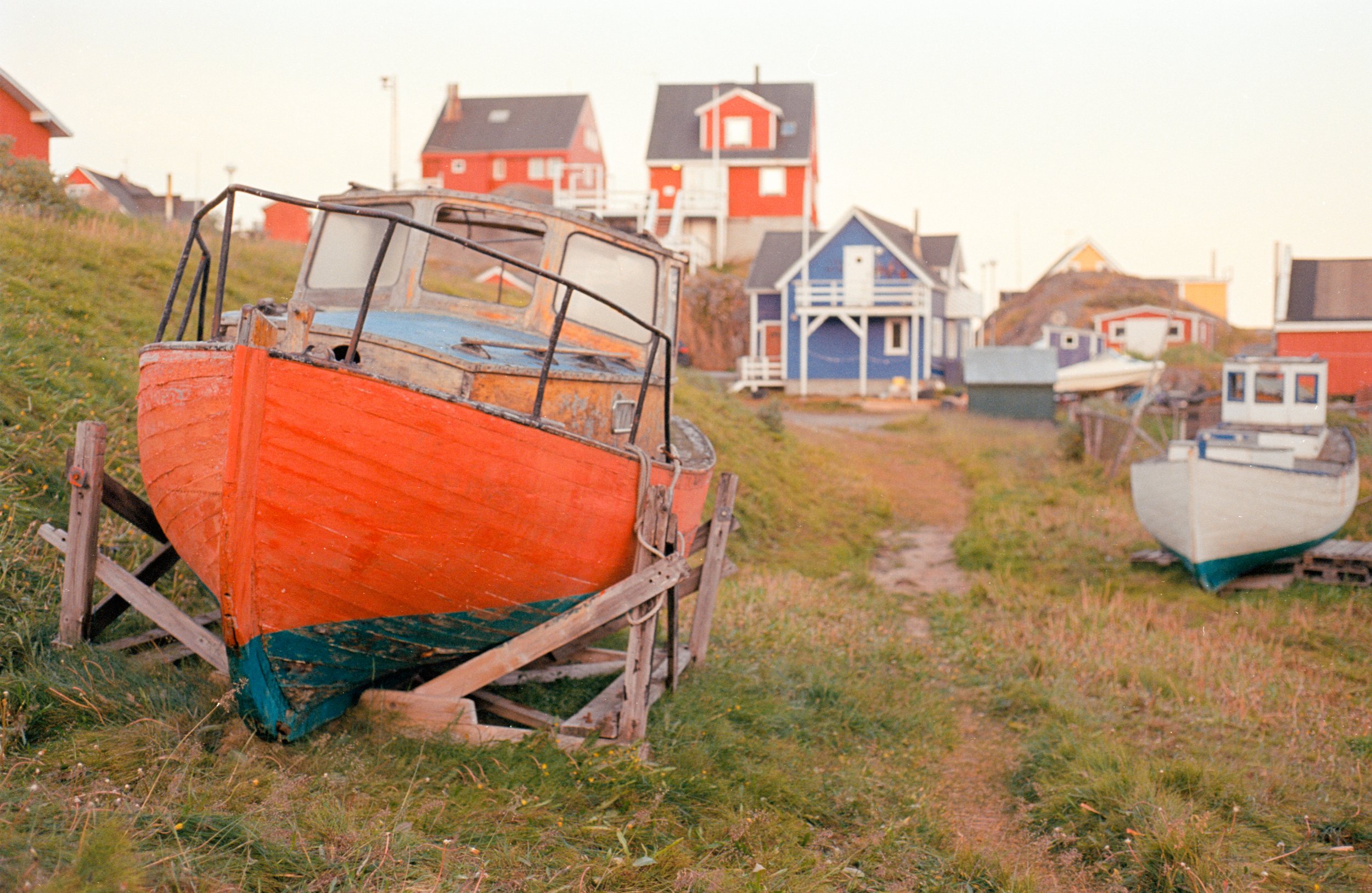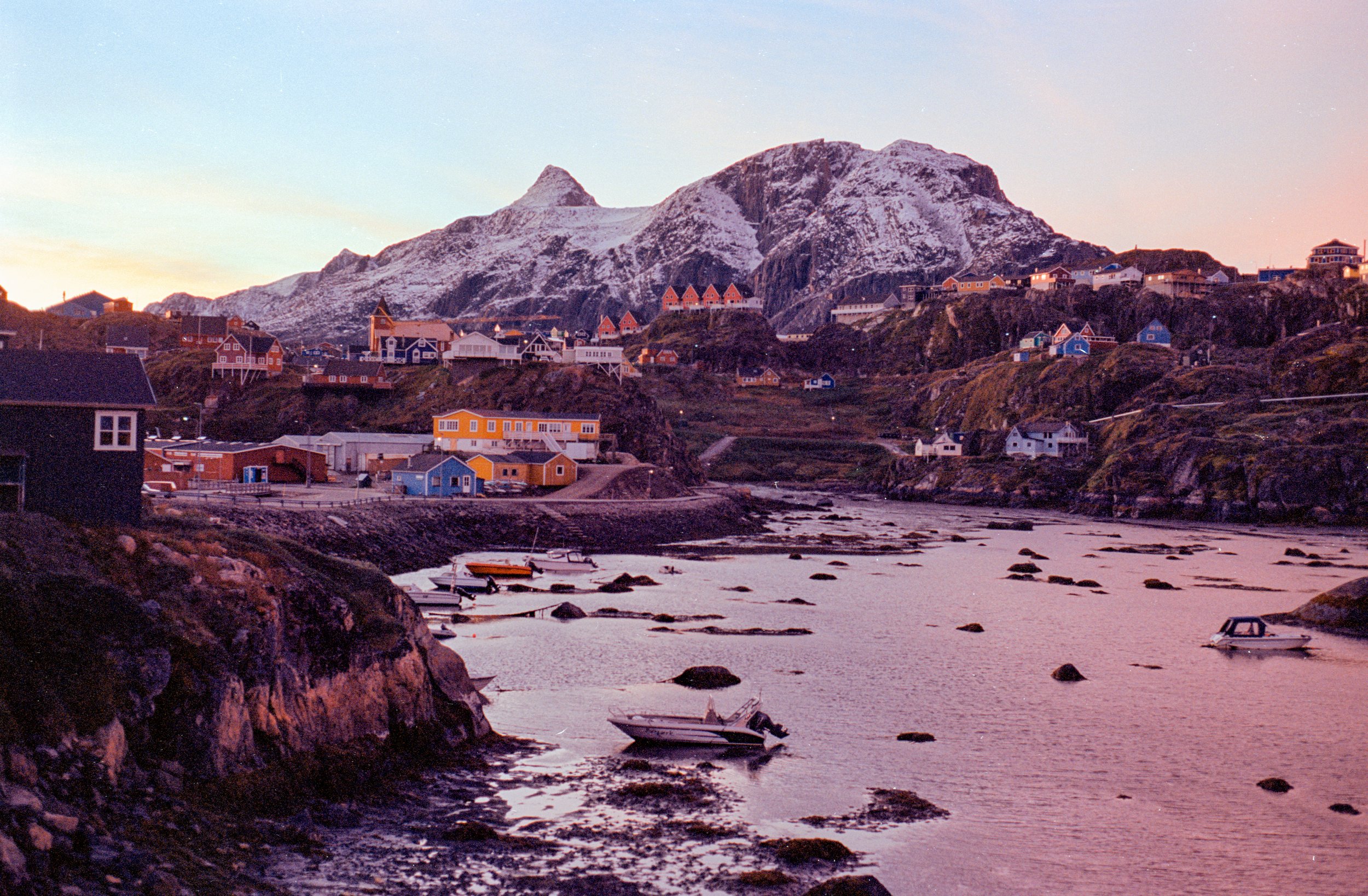It’s the last day of a nearly monthlong stay in Greenland. Drizzle alternates with rain while the wind blows unrelentingly; like most days this past month, the weather has been temperamental and unseasonably wet. Despite this, I now sit cliff-side above one of the most spectacular views in Greenland. Just out of reach, icebergs float through the Ilulissat Ice Fjord in such density that I cannot even see the water itself. Some are as large as skyscrapers turned on their sides, slowly drifting seaward from their origin at Jacobshavn Isbræ, a terminal glacier of the Greenland Ice Sheet.
Jacobshavn Isbræ is the fastest flowing glacier in the world, producing 333,000 blue whales worth of icebergs daily.
Just yesterday, we (fellow adventuring grad student Joel and I) arrived here via an overnight ferry. For most of that morning, I spent my time on the upper deck, leaning over the railing to watch how narrowly the crew skirted us around each berg. Even at the beginning of our journey 200 miles to the south, the ferry had to navigate icebergs that drifted southward from the massive glacier at our destination in Ilulissat. On arrival to port, we set out to the fjord immediately, soaking in every second of a rare sun. With camp set up above the fjord several miles from town, the rest of our time was blissful: sitting on the shore, listening to the creaks and crashes of the bergs, throwing rocks at passing icy targets, resting on a bed of moss—the ground everywhere so spongy no sleeping pad was necessary. The relatively gentile pace of this mini excursion was a welcome change, given the first part of our trip involved scientific research at the pinnacle of the Greenland Ice Sheet followed by 8 days of backpacking through a barren, Arctic landscape.
This opportunity to travel across Greenland arose from my graduate fieldwork: for a week, I deployed custom GPS instruments in the ice at 10,000’ above sea level in the middle of Greenland’s expansive ice sheet. Part of these operations involved flying to the island with the Air National Guard (no commercial airline tickets necessary)—so why not stick around after to explore a bit more? Of course the morning of our extraction flight from the ice sheet back to the coast greeted us with a massive snowstorm, which would normally ground any flight operations. Motivated to get themselves home however, and this being their final flight for the season, the ANG sent in their A-team: just several hours later, an LC-130 remarkably broke through the thick cloud layer and touched down on skis, coming to collect us. At -10C, the propellers kept on spinning as we hustled on board. No point in risking frozen engines up here.
Installing GPS instruments.
With my science goals complete, it was time to switch into backpacker mode. Our flight dropped us off in Kangerlussuaq, an old US military airport at the margin of the ice sheet and 100 miles from the sea—the only town in Greenland not immediately located on open water. From here, the rest of the scientists caught another military flight bound stateside while we stayed behind. It was from here we would walk the full 100 mile distance to the coastal town of Sisimiut, crossing a rare stretch of Greenland covered more by countless lakes and tundra than the ice and mountains typical of Greenland. The positive of this terrain: supposedly not polar bear habitat.
Town featured a frantic search to find the right kind of stove fuel, then it was off to find someone to drive us the 7 or so miles to the trailhead, bypassing an otherwise monotonous roadside walk. Framed the right way, we managed to spark the curiosity of some fellow scientists to go and explore the far side of town. Enthusiastic to finally be off, we all piled in the hotel truck and drove to our starting point at an abandoned research and military facility called Kellyville.
With heavy packs, we tromped off immediately into the mud, with thoughtful shouts of “don’t die” echoing behind us. We were on our way. At first, I thought it would be fun to count every lake we passed as a form of tedious entertainment akin to tallying switchbacks. By lake 20 I gave up, realizing we had only covered 8 or so miles. However, there was one lake of interest that day I was particularly excited about: Amitsorsuaq. A snaking 12 miles in length, most camp on one end on the first day and spend the entire following day traversing it’s shores just to reach the other side. A lucky few sometimes find canoes and spend the day working their arms paddling, a welcome change considering the many miles of walking ahead. By day’s end, we arrived at the lake and were dismayed to not see any canoes: we’d have to camp here for the night. As we took off our packs, a Danish man appeared as if by magic and told us he stashed a boat just around the bend. Knowing it would be gone by morning, we repacked, hopped in and launched off, paddling without a plan and weary after a long day of walking. But we had a canoe!
With glassy water, each paddle echoed across the steep shoreline while my ears rang in the near-silence. Another hour and a half brought us to a small, rocky island covered in large tent-unfriendly cobbles. Yet with its own herd of reindeer and 360-degree views to ourselves, it was easy enough to ignore my sore back for this prime location.
The next day featured a quick sprint to the summit of the island, a nice dose of sunshine, and the longest stretch of our paddle. Just that morning, strong headwinds were blowing small white caps our way, but as soon as we loaded the boat, a 180-degree swing in the winds magically propelled us to our destination—maybe the weather was on our side after all. Camp that night would be on the shores of yet another lake—this one so vast it stretched inconceivably to the horizon. There was no doubt we were now deep in the backcountry, with stunted vegetation clinging to large, bony mountains, and each lake lying deserted, all exuding a primal atmosphere. Here, we were exploring an empty corner of the least densely populated nation on Earth, on one of the more remote islands of the planet.
Day three featured gray skies on the verge of rain. Departing our lake, we noted the white sandy beaches that, when combined with this crystalline, turquoise water, could rival the shores of the Mediterranean—if only it was sunny. A rapid ascent into the highlands and we were at our next camp, surrounded by a sparse, reddening tundra readying for winter. At this point, I was always slightly on the hungry side, wandering around camp each day like a zombie. One source had told us all the berries and mushrooms around us were edible, another told us that a singular berry, hard to distinguish from the rest, was toxic, and so I silently tortured myself by thinking about all the foraging I could have been doing. Sleep came earlier each night as well (at this point, 7 or 8) following an early dinner and a couple of chapters of my book. Given it was already late August, the sun was finally setting, but not until long after we were asleep.
With early bedtimes came early rises, and the next morning I found myself laying awake in my sleeping bag before dawn. The previous day I had scampered up a small mountain above camp with fantastic views of the lake country below, and suddenly feeling energetic, I bolted out of the tent and up that same slope to catch the sun. What had been cast all in gray the day before was now cloaked in a layer of frost, with the surrounding rocks illuminated orange and red by the first rays of sun. Having scrambled a summit a day up to this point, I now decided to see how long I could keep this “extra credit” trend going of ticking peaks alongside our route.
Sunrise from an unnamed peak overlooking Tasersuaq.
Today we would cross the biggest, baddest monster of a bog (in already the wettest season in the last decade), followed by the biggest river ford of the trip. While trekkers coming the other way looked haggard and wet after this portion, I remember smiling to myself thinking of my secret weapon: waterproof socks. First came the boggy marshlands, where each step, if carried out too slowly, would result in a suctioning and sinking feeling not ideal for dry feet or keeping your shoes on. The river was easy enough—and here we caught our first glimpse of the sea, reaching us via a winding fjord over 50 kilometers long. At this point we had gone three days without seeing another group in our same direction, and the trend continued even as we passed a small hunt perched at the mouth of a narrow, sculpted valley. Up we ascended to next camp, overlooking yet another valley overflowing with massive wind-wrinkled lakes.
Another valley, more lakes.
What was on my mind by day 5? I awoke with a bit of a frown as I thought about yet another meal of overly sweet maple sugar oatmeal followed by a day of clouds. But as soon as I stepped outside, it was clear today would be an amazing day. I unashamedly awoke Joel at a crispy 6am, we quickly packed camp, and set down the valley with our biggest target now feeling more achievable: the summit of Innajuatoq, another bonus peak off our trail. Following 8 miles with our packs, we dumped our bags at a small tarn and scouted a potential route towards the summit. At this point, our trail each day cut deep into the tundra and mud, narrow enough to sometimes necessitate placing one foot immediately in front of the next—no wide stances allowed. Now, five days from the nearest settlement, we were venturing even more into the unknown and completely off route, breaking free from our weathered path.
Two days prior, while scanning my incredibly low-resolution topo map, I planted the seed of trying to tick what appeared to be a mountain called Innajuatoq, but couldn’t say for sure. Now, we ascended steeply into the unknown, wondering when someone last ventured this way. Up until this point, I had joked each day that our surroundings reminded me of somewhere else: day one gave Scotland vibes, the rocks of day 2 appeared like those in Utah, the shrubs on day 3 had an unusual and uncanny resemblance to those from Southern California. Now, the landscape was without doubt Greenlandic—the rocks we clambered over were scraped clean by glaciers that must have retreated within the last 10,000 years and the dark, weathered soils barely dressed the ground in their infancy. After dodging rain clouds, crossing cliff faces and scampering around translucent tarns, the summit view revealed distant glaciers in all directions, fjords, dark blue waters, and not a plane, town or road anywhere. This most certainly was the rugged, empty Greenland I had in mind.
Summit View from Innajuatoq.
With a 20 or so mile day complete, I stumbled back to my pack and threw myself into a poorly pitched tent. I was out by 6pm. Each night I was getting around 12 hours of uninterrupted sleep, a rejuvenating miracle I still don’t fully understand. Yet on this night, I awoke resoundingly at midnight, suddenly confused and worried I wouldn’t be able to sleep again following a solid six hours of rest, something more typical of my daily life. Earlier, I must have sloppily left the tent fly unzipped (terrible idea for the bugs and rain), but as I turned over in my sleeping bag, a flash of pale green caught my eye. Suddenly very much awake, I unzipped the inner tent door, tucked myself back into my sleeping bag and watched the auroras float across the sky.
The next two days were a bit of a blur. Gray skies, another summit, more bogs and a bout of late season biting bugs. We had finally met some fellow trail people as our schedules drifted back to normalcy and rains forced us into one of the huts, breaking 7 nights of continuous tent sleeping. Those rains soon turned to snow (down to sea level), another unexpected gift for our soggy feet. Some in our hut spoke of hiring a boat to come fetch them, worried about deep snows at the final mountain pass before Sisimiut, the end point. As we set out on slippery ground in the half-light of a retreating storm the next day, it became clear we would be the trail breakers. Luckily, the narrow valley we traversed prevented any serious wandering off route, but a thick, wet layer of snow atop spongy mosses and tundra gave my ankles a nice workout. As we stopped to fill up water at a small series of falls, I realized this might be the last time we would enjoy the thrilling experience of unfiltered water. Until now, I had dunked my bottle into whatever river or stream crossed my path: with an abundant, uncontaminated water supply, I only carried a single bottle, more worried about getting small stones or sticks in it than anything microbial.
As if time had warped, 8 days suddenly felt like nothing, and I sadly stepped on to pavement in Sisimiut just as a noisy car skirted past (I would soon find out many Greenlanders are particularly excitable while driving, even on wet, narrow roads). Despite ranking as the second largest town in Greenland, we walked barely a full mile from one end to the other, set up in a hotel (originally planned to camp, but it was raining incessantly of course), ordered two dinner-sized meals for myself, and slowly let the journey sink in. To some extent, it still felt like we were out in the wild, perched within a small town largely disconnected from the outside world, clinging to the side of a barren, ice-carved cliff. For over a week, we had only seen a handful of people, perhaps outnumbered by the reindeer. The vast land we traversed offered a blissful routine of walking, enjoying the small details of the tundra and the occasional grumble over a downpour or lack of food, all making a return to civilization all the more of a shock.
To leave Greenland, we would take a ferry 200 miles north to iceberg-filled Ilulissat, followed by a series of flights home via Iceland two days later. But I’m not thinking about that homeward flight just yet: I’m already dreaming about my next trip back…
*The trail we followed has in some form or another existed for thousands of years, as various waves of hunter and gatherer societies have traversed this relatively fruitful land in search of Muskox and berries. But soon the essence of the trail will change: already partially scarred by ATV track construction, its completion will signify the loss of an expansive and culturally significant wilderness and the destruction of the trail itself. Plans for an automobile road will follow in the future.
**A thank you to all the people who helped make this trip possible, and to the Dartmouth Outing Club Schlitz Fund for partially funding this adventure.
Bergs float through Disko Bay.

